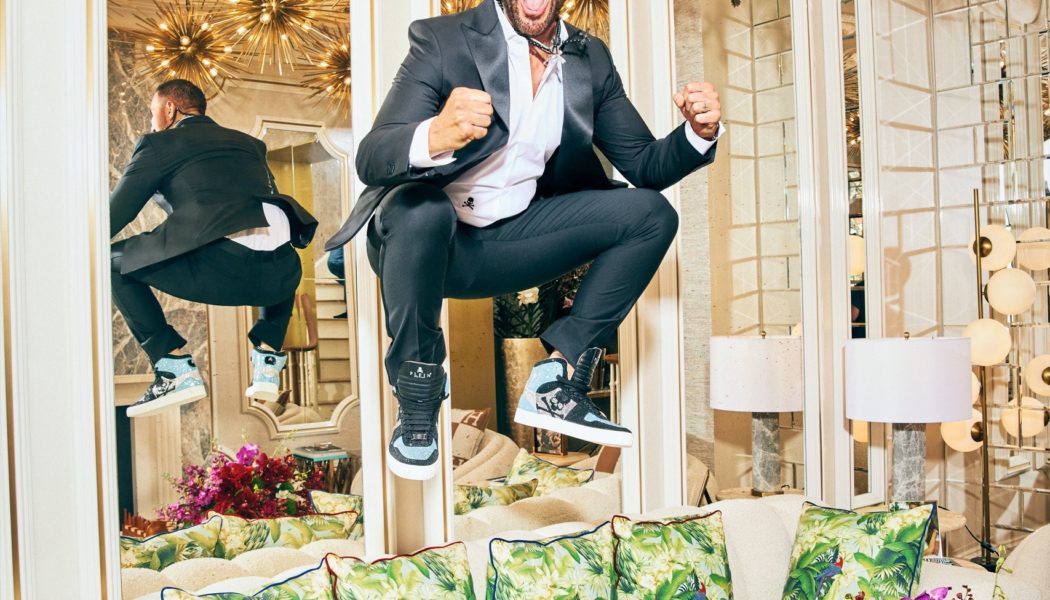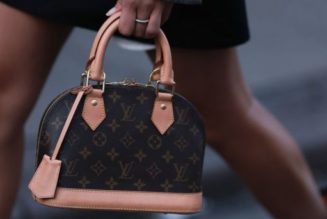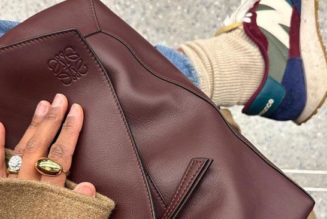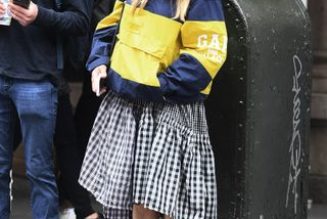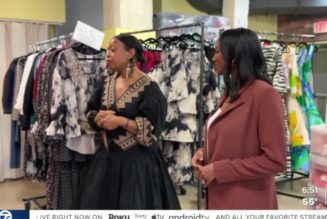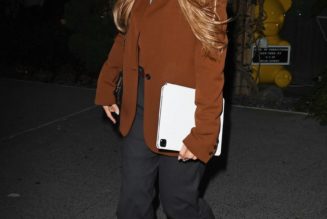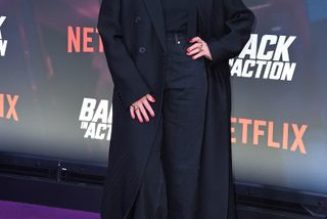How Philipp Plein Became the King of Low-Brow High Fashion
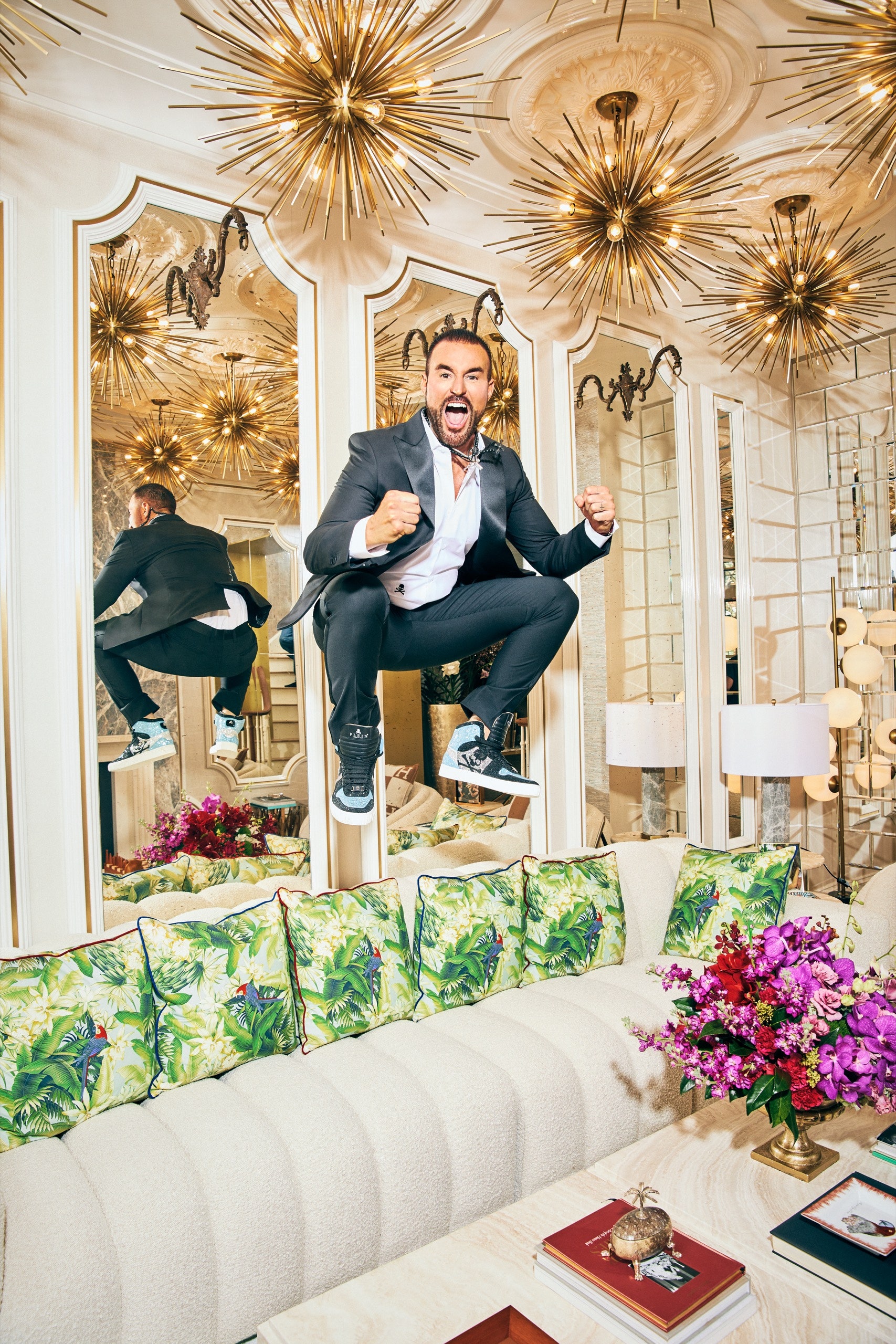
Philipp Plein, the forty-five-year-old German fashion designer, is thin and muscular, with stiffly gelled hair, a stubbled jawline, and arms covered in tattoos (the word “Billionaire” in fat lettering; a cross with “Veni Vidi Vici”; a sad-faced Jesus). Since founding his eponymous clothing brand, in the late nineteen-nineties, Plein has become an effective hawker of loudly luxurious wares, beloved by customers with a taste for the extravagant, if often sneered at by the fashion establishment. His runway shows are elaborate affairs, featuring pyrotechnics and, occasionally, Jet Skis. “I’m trying to fuck your mind tonight,” he told an audience in Milan, in 2015. For that show, which was opened by the rapper Azealia Banks, Plein had a roller coaster (which some of the models rode) installed on the catwalk, leading to media speculation that the event may have been “the most expensive fashion show ever.”
Plein serves as his brand’s best living advertisement. He mostly wears clothing of his own design: skinny leather pants with a wealth of zippers; skull-emblazoned sweaters; chunky sneakers with a prominent Philipp Plein double-“P” logo; slim-cut jackets in exotic-animal pelts; oversized crystal-studded watches. His naughty-playboy look combines elements of well-off hair-metal rocker in his dotage, white hip-hop impresario, and “Jersey Shore” cast member. “Which hetero guy in the world wouldn’t want to look like this?” his global wholesale director, Fabien Girardi, asked me.
Celebrity fans of the brand include the actor Nicolas Cage, the soccer player Cristiano Ronaldo, and New York City’s mayor, Eric Adams. “The Plein look is very West Coast aughts,” the fashion podcaster James Harris said. “It’s the rhinestones, the skulls, the gaudy T-shirts with huge logos. It’s for people who want to make sure everybody can tell that they’ve spent a thousand dollars on a bedazzled T-shirt.” There are important antecedents to Plein’s maximalist style, especially among Italian designers—Versace, Dolce & Gabbana, and Roberto Cavalli, to name a few—but the fashion world isn’t where Plein looks for inspiration. “Elon Musk is my hero,” he told me. “I like underdogs.” A menswear-magazine writer I spoke to referred to Plein as “the Andrew Tate of fashion,” comparing the designer to the oily former kickboxing champion and men’s-rights media personality. The New York magazine writer Matthew Schneier told me, “The press has never really liked Plein. But a certain kind of customer just loves him.”
The Philipp Plein line comprises men’s, women’s, and children’s clothing, along with timepieces, eyewear, perfume, and a recently unveiled home collection. (The kids’ collection includes faux-leather biker jackets retailing for more than twenty-one hundred dollars and leopard-print leggings retailing for two hundred.) Last year, the Plein brand had a net global revenue of two hundred and fifteen million euros, on a par with luxury brands such as Thom Browne and Dries Van Noten. The goods are sold in ninety-five dedicated Philipp Plein shops and in more than five hundred multi-brand luxury boutiques worldwide. The designer also owns a men’s high-end tailoring brand called Billionaire, and he just launched a third line, Plein Sport, offering sneakers and activewear at a lower price point than is available in his main collection. (The cheapest pair of Plein Sport sneakers is a hundred and twenty-five dollars.) Plein has high expectations for the new venture, which he hopes will become a premium alternative to brands such as Nike and Puma. “We’re opening three hundred Plein Sport stores in the next thirty-six months,” he told me in Los Angeles, this past December. “This is the future.” He had arrived earlier that morning from Munich, where he had just received an award from the entrepreneur and motivational speaker Jürgen Höller. (Though Plein delivered his acceptance speech in German, he finished it in English, with the words “Fuck the haters,” a phrase he apparently likes so much that he had it inlaid—with the addendum “before they fuck you”—on a conference table at his company’s headquarters.)
Plein owns homes around the world: in Lugano, Switzerland, in Cannes, and on New York’s Upper East Side. (He also owns a fleet of luxury vehicles, among them four Rolls-Royces—“a Ghost in L.A., a Cullinan in New York, a Dawn in the South of France, and a Phantom in Switzerland,” he told me.) In 2014, he bought Chateau Falconview, a two-hundred-and-fifty-million-dollar mansion in Los Angeles, whose build-out on a Bel Air hilltop has proved so ambitious and complicated that it is still under way, nine years later. While the main residence, a twenty-five-thousand-square-foot structure, is in progress, another house on the property has been completed, and, on the evening we met, Plein was opening its doors for the launch of two pairs of special-edition sneakers he had designed with the hip-hop entertainer Snoop Dogg, in a collaboration named #PLEINDOGG.
Technically a guesthouse, the three-bedroom home has a high-rococo opulence reminiscent of Liberace’s Vegas boudoir, and is crowded to near-explosion with crystal chandeliers, gilded frames, velvet ottomans, faux-Roman statuary, and a leopard-print ceiling. A mirror that doubles as a television in one bedroom flashes with the digitized words “I fucking love fucking you.” Outside the house’s marble entrance, Plein had parked a yellow lowrider Impala convertible, from the 1996 music video for the Tupac Shakur track “To Live and Die in L.A.,” next to a yellow-and-purple sneaker the size of a Mini Cooper. It was a comically enlarged version of one of the #PLEINDOGG models. (The shoe it was based on, which is encrusted with crystals, retails for more than sixty-four hundred dollars on the Plein Web site, where, like all other Plein products, it’s also available for purchase with bitcoin.) “It smells so-o-o good,” a guest said, as she passed by the gargantuan sneaker. “Is it cake?” She peered more closely at the dense surface. It was cake.
Inside the house, Snoop Dogg, who was wearing a sequinned Plein zip-up and blinged-out sunglasses, with his twisted braids tied back in a long ponytail, was posing for pictures. “This is the greatest collaboration I’ve ever been a part of, real talk,” the rapper told a video crew, his voice low and slow. He said that his contribution to the project consisted of selecting the shoe’s “L.A. Lakers colors.” Plein chimed in: “Snoop is very L.A., he represents L.A., he’s L.A., he stands for L.A., it’s all about L.A.” The designer was wearing tight leather pants and a baggy, wildly patterned black-and-white cardigan with the Plein logo on the back. When the Mötley Crüe drummer Tommy Lee entered the party with his wife, the Internet personality Brittany Furlan Lee, Plein jumped to his feet to greet them. “Tommy fucking Lee! What’s up, baby?” he said. “And there’s wifey!”
A few dozen guests milled around, sipping flutes of champagne and posing for selfies, as R. Kelly’s “Ignition (Remix)” played from the speakers. Many of the male guests resembled Plein—tight T-shirts and tighter jackets, heavy watches and heavier cologne. The women in the room sported a kind of high-femme maximalism, with snug-fitting gowns, vertiginous platform heels, and faces variously hollowed and inflated by a dermatologist’s needle. One of the guests, Kristy Garett, a model and influencer, told me that she lives in Milan and Los Angeles. Lithe and blond, she was wearing a shimmering, emerald-colored body-con Plein minidress, inlaid with thousands of tiny rhinestones. “Usually, these dresses are so heavy and stiff, but with this one I feel like I have nothing on,” she told me. As she turned around to show off the gown’s low back, it struck me that such a dress—delicate and intricate, yet still able to withstand the chaos and drunken revelry of the kind of event at which it would realistically be worn, was, in its own way, a feat. Plein refuses to design garments that are stuffy or unyielding, even though high fashion has long been associated with pain and discomfort. (Consider Kim Kardashian’s intense and possibly Ozempic-fuelled weight-loss journey to squeeze into Marilyn Monroe’s “naked” gown—another rhinestone-covered, form-fitting dress—for the 2022 Met Gala.) Plein’s clothes are meant for their wearers to have fun in, which is part of what makes them sexy.
Out on the balcony, Tommy Lee was smoking a Marlboro. In 2022, he had walked in the Philipp Plein spring-summer 2023 show in Milan before playing the drums bare-chested on a raised platform that hovered over the runway. He and his wife live in Calabasas, but they are renovating a Brentwood house not far from Plein’s, which they told me was designed in a Japanese style. “You go in there and you’re, like, Am I in fucking Kyoto?” Lee said. He was wearing a wide-brimmed hat, ripped skinny jeans, and a gold-and-diamond Death Row Records pendant that Snoop Dogg had given him. One of his cheekbones was tattooed with Japanese characters.
Lee went on enthusiastically, “Philipp gets it. We’ve seen it all, we’ve done it all, it’s really hard to stand out. So you gotta go extra fucking big.”
“I mean, look at this place,” Furlan Lee said, gesturing at the house.
“It’s fucking Disneyland!” Lee said.
The history of fashion in the past century has been one of a toggle between excess and restraint. Periods of asceticism, stylistic and otherwise, have alternated with eras of overt opulence—take Dior’s voluminous and ultrafeminine New Look ushering in a lavish silhouette after the leanness of the Second World War years, or the glitzy eighties follies of Christian Lacroix giving way to the minimalism of Jil Sander and Calvin Klein in the nineties.
More recently, following the logomania and maximalism of the early two-thousands, which spawned the Philipp Plein line, fashion has seen a return to a low-key, less easily identifiable type of luxury—a trend known as “stealth wealth.” In a period of economic and political turmoil, even the rich, as the style reporter Lauren Sherman has noted in her newsletter for the Web site Puck, have “stopped wanting to look so obviously rich.” This is the kind of style that we see, for instance, on HBO’s “Succession”: Logan Roy is a billionaire, and he’ll wear a Loro Piana baseball cap that retails for upward of five hundred dollars, but the cap is logo-less, and made of dark, sober cashmere. It’s consumption of the IYKYK sort, conspicuous only if you can pick up on its signs.
This mentality is anathema to Plein. “When I started out, if I’d have tried to sell a black cashmere sweater, no one would have bought it, because who the fuck is Plein? I was a brand nobody knew,” he said. (The designer made a similar comment before presenting his collection at New York Fashion Week in 2017, at a show where Madonna, Kylie Jenner, and Paris Hilton sat in the front row. “People always ask me, Who the fuck is Philipp Plein?” he said. “I’m just a dreamer and a believer.”)
It was the morning after the party in Bel Air, and Plein was sitting in his immaculate kitchen, eating almonds from a vacuum-sealed bag. He doesn’t smoke, drink, or do drugs (“I just love to drive fast”), so despite his late night he looked fresh in his fitted, heavily distressed jeans and bright-white sneakers. He spoke in a hustler’s excitable clip. “I understood that I had to have a product that was different,” he continued, “so, if I put on a cashmere sweater ‘Fuck you all’ in Swarovski crystals, I could sell it for five thousand dollars.” He paused, registering my surprise. “Yes, five thousand dollars! Even at Loro Piana, they wouldn’t do that! And so, the business model is really very simple. Everything has to be rich, has to be loud, has to be in your face.”
Plein isn’t shy about expressing his disdain for the fashion industry. “Designers are like football players, or modern prostitutes,” he said. “Brands use them as long as they enjoy them and, once they don’t enjoy them, they are exchanged.” He popped a couple of almonds into his mouth. “It happened now even with Alessandro.” Plein was referring to Alessandro Michele, the designer who, for nearly a decade, had produced a gaudy iteration of Gucci, but had recently exited his role as creative director after sales had fallen. Since Plein’s company is independent and self-financed (“We don’t have loans or nothing!”), he can afford to stick to the niche aesthetic his clientele loves, never veering from the path he started forging two decades ago, and trusting that the trend pendulum will, at one point or another, likely swing back in his direction. “The vulgarity is the point,” Buzz Bissinger, a Pulitzer Prize-winning journalist and the author of “Friday Night Lights,” told me. (Bissinger, who has written about his infatuation with luxury, owns many Plein pieces.)
Plein’s celebrity customers are generally not quite A-list, but many of the personalities who do wear his brand, such as Ronaldo, are known for peacocking, helping attract the kind of consumers who feel an affinity for a flashy, no-fucks-given attitude. (“If their Lambo is in green, they want their crocodile or python jacket and shoes color-coördinated to it,” Ernst Fisher, who runs a Philipp Plein boutique in Vienna, said.) Some of these celebrities, including Cage, Hilton, and Lindsay Lohan, who once served as the face of the Philipp Plein line, have been subject to the same cultural shifts as the designer. They are figures who went from being genuine stars to punch lines and then, after some collective critical reëvaluation, to cultural icons, if mostly ironic ones. There’s arguably something radical in waiting for the culture to come back to you, instead of contorting yourself around the finicky expectations of the current era.
The fashion establishment’s tendency to pretend that it is above Plein’s kind of client—the unapologetic nouveau riche—angers the designer. “Who likes to spend money? Who likes to show off? The new rich!” he told me. “And we’re all living off these people!” He mentioned the rise of Russia as a luxury-consumer market: “Everybody suddenly had matryoshka designs—Chanel, Gucci, Dolce. Everyone! Then it was China, because these are emerging markets, and these people had never seen anything, and they became rich in a very short period of time, and they make money fast and they spend money fast. But then these brands say, ‘Us? Oh, no, no!’ Because they’re embarrassed.” He, however, has no problem admitting which demographic he’s aiming for. (His biggest markets, he told me, are Eastern and Central Europe.)
While Plein was talking, Wayne Schneider, a heavyset luxury-car dealer and auto-body-shop owner, entered the kitchen. Schneider, who seems to be both a friend and an all-around fixer for Plein, was wearing wraparound sunglasses and a diamond chain. “Wayne, you look like a drug dealer,” Plein said. He explained that Schneider had arrived to pick up the sneaker cake, which was still sitting outside, to take it down to Los Angeles’s Skid Row and feed the homeless. Plein told me that Schneider organizes a weekly soup kitchen for the unhoused in New York, to which the designer also donates funds and provisions. (“And, by the way, Mayor Adams comes all the time, and Wayne even gave him a Philipp Plein watch.”)
Schneider also helps Plein realize some of his more extravagant schemes. Cutting excitedly into each other’s words, the two recounted how Schneider had once devised a plan to insert a Ferrari Testarossa (“If you remember ‘Miami Vice’ ”) into a SoHo retail space for a Plein pop-up where the rap group Migos was set to perform.
“The hoisting company said, We can do this job, but it would be a hundred and fifty thousand dollars, and Mercer Street between Canal and Houston has to be shut down,” Schneider said. “So instead we took the car apart on the sidewalk. Zero permits!”
Plein broke in. “But do you know how he blocked the street?”
“I called up this friend—”
“His friend has a truck,” Plein continued, “and he pretended to have a flat tire, and it was a huge truck, so, while they fixed the tire, he was, like, We can get the car in.”
“We got it in sideways,” Schneider said.
“He’s a legend, this guy,” Plein said.
“One time, it’s Labor Day weekend, and Plein tells me, ‘I want to do a car rally in New York,’ ” Schneider said. “So we went on social media, and we got one hundred and fifty cars. And we did them in increments.”
“No permits,” Plein said.
“Zero permits! I said, ‘All Porsches, come eight-thirty to nine. Lambos, nine to nine-thirty.’ ”
“This was at the Plaza, where my office is.”
Schneider pulled out his iPhone and hit Play on a video of a honk-heavy midtown snarl of ostentatious vehicles. “You see, so many Lamborghinis, there’s no room, they had to go the wrong direction down Fifth Avenue. Then the McLarens came.”
“We ended up unofficially shutting down Times Square for fifteen minutes. Can you imagine?” Plein said. His voice rose in excitement. “Gucci would never do that, do you understand? I do stuff for the people! And the people love us! They are like us!”
Plein told me that he considers himself apolitical (“I don’t care about politics, I care about my business and my fashion”), but his self-positioning as an underdog hero of the common man, who is successful despite the falsity and the snobbery of the élites, is undeniably Trumpian. In 2017, for his New York Fashion Week début, Plein adopted the slogan “Let’s Make NYFW Great Again.” (Tiffany Trump also sat in the front row at his show that year.) Plein and his acolytes might believe that the culture will eventually come back around and embrace them, but that doesn’t mean that the wait for the next shift—and the pretentiousness that has flourished in the meantime—hasn’t left them feeling somewhat embittered. “It’s a community based around the fact that those that are in won’t accept us,” James Harris, the fashion podcaster, told me. “That’s how streetwear was born, that’s how punk was born, but when it’s purely about cutthroat wealth and conspicuous consumption it’s just twisted.”
Leaving Chateau Falconview, I found myself in my rental car right behind a truck whose flatbed was occupied by the enormous sneaker, which was largely uneaten, save for a watermelon-size gash in its toe cap. I watched the cake, its sponge now slightly soggy, as it jostled gently to and fro down Bel Air Road, on its way to Skid Row.
Plein grew up in a middle-class family in Munich. His mother was a housewife; his father, who is no longer alive, was a doctor and an alcoholic. “He was not very nice to my mother,” Plein said. When Plein was three, his parents divorced, and mother and son had some hard years, briefly living with Plein’s grandmother and moving around frequently. Plein switched schools several times. Life became more stable after his mother remarried and had a second child with her new husband, also a doctor, who treated Plein like his own son. But Plein’s early-childhood experiences left their mark. “I’ve always felt like an outsider,” he said.
When Plein was a teen-ager, his family moved to Nuremberg, where he began booking modelling gigs and cleaned ashtrays at a night club. (“They wanted good-looking kids to work there,” he told me, pulling up a picture on his phone so that I could see him posing on the cover of a 1995 issue of the German teen magazine Bravo Girl!—a grinning, shirtless boy with a surfer’s blond bob.) He was thrilled by the fast money he could make in night life, but his mother and stepfather, unhappy that he was neglecting his studies, sent him to boarding school. Once more, he was the new kid, and he struggled to adjust to the school’s preppy environment. “I cut my hair like Harry Potter and wore polo shirts,” he told me. “And then, after two months, I decided, I don’t want to blend in anymore.”
In the nineties, Plein began attending law school in Nuremberg. (“I wanted to study about the rights we have as human beings,” he told Women’s Wear Daily, in 2014.) But he didn’t like being a student who was financially dependent on his parents. He had happened upon a newspaper article about the profitability of the pet-supply industry and had come up with an idea that he felt would be a surefire money-maker. Flush with a small inheritance he had received after his grandfather’s death, he designed and produced a luxury dog bed—a clean-lined, Le Corbusier-style metal and faux-leather mini-sofa for the pooch that wants for nothing, which he sold for fifteen hundred dollars. “The production price was five hundred, and I thought, If I sell one thousand, I’ll make a million. And I really wanted to make a million,” he told me. The bed was a hit—Plein made his million—and he dropped out of school and began to produce furniture meant for human customers as well as accessories and clothing. His design language coalesced into what has since become his familiar, neo-Baroque vernacular, though he claims that this had nothing to do with his own taste. He’d in fact always liked Bauhaus-influenced design, he told me, and things that were “simple as fuck.” But, after consistently selling out of pillows and jackets that he adorned with Swarovski crystals as an experiment, he began to realize that people liked bling, and so he “gave them what they wanted.”
On a Friday morning in January, Plein pulled up in a Mercedes G-Class S.U.V. at his headquarters in Lugano, across the border from Italy. His company has been based in the city for the past decade, and he lives there during the week. Switzerland offers considerable tax incentives to foreign businesses such as Plein’s, making it a popular place of operation for international fashion brands. But Plein also likes Lugano for its high quality of life and utopian lakeside vibe—“It’s the Disneyland of Switzerland,” he told me—a far cry from what he sees as the real-world bleakness of Milan, where his showroom is situated. “Milan is dirty, it’s so ugly,” he said. “I would never live there.” On the weekends, he drives to his estate in Cannes, which he shares with his girlfriend, Lucia Bartoli, a vegan chef and a social-media influencer, and their one-year-old son, Rocket Halo Ocean. (Bartoli is now pregnant with their second child, and Plein also has a ten-year-old son, Romeo, from a previous relationship, who lives with his mother in Rio de Janeiro.) With pillowy lips and a pneumatic figure, Bartoli, who is British, seems perfectly made to represent the Plein brand, which she often does on Instagram. (In one recent post, she is squatting in crystal stiletto platforms, leather leggings, and a sparkly jacket, with the words “Fuck me like you hate me!” in mirrored lettering on the wall beside her.)
Plein, charging up the stairs to the fifth floor of the handsome marble-and-glass office building, seemed even more kinetic than usual. He energetically pointed out elements of the décor along the way, including several paintings by Alec Monopoly, the American graffiti artist beloved by the YouTuber Jake Paul and the reality-TV star Scott Disick. (One painting was made on actual dollar bills: “This is illegal, you know.”) Plein had a couple of big days ahead of him. That night, he was staging a show of his tailoring brand, Billionaire, as part of Milan’s men’s fashion week; the next day, he was hosting a large-scale presentation and party for the Plein Sport line. Reaching his office, he sat down for a meeting with Olga Burfan, the head of his global e-commerce operation, to view N.F.T.s that would be rolled out alongside the online launch of a collection of Plein Sport sneakers.
Watching a screen above his desk, Plein began going over the N.F.T.s—a series of videos of complicated-looking running shoes in various vivid hues orbiting in space, not unlike the bone in Kubrick’s “2001: A Space Odyssey.” The black-and-gold colorway was his favorite, he said. But he seemed distracted. He was stressed because the rapper Tyga, who had been booked to play a set at the Plein Sport party, had fallen ill and cancelled his appearance at the last minute. “I have five thousand people coming tomorrow,” Plein told Burfan. “Worst case, I’ll perform.” He smiled thinly, and spritzed himself with one of a number of Plein fragrances arrayed on his desk.
Jason Derulo, the pop and R. & B. singer, had agreed to stand in for Tyga, but, Plein said, one of the brand’s executives was against that choice, and pushing instead for the British drill rapper Central Cee, whom Plein had never heard of. “She has this complex about being cool,” Plein said, of the executive. “When she heard about Derulo, she was, like, He’s the worst, he makes me want to puke, I won’t come.” He went on, “She’s a girl who’s, like, too fashion.” He raised his eyebrows and pursed his lips to mimic a snooty expression. “When you’re too fashion, the people don’t understand it.”
Then, abruptly, he turned back to the matter at hand, quickly approving the videos that Burfan showed him. “Va bene, super, super,” he said. “So, everything is under control. Money never sleeps.”
Back in his Mercedes, on the way to the showroom in Milan, Plein talked with his P.R. reps about the Derulo conundrum. “He’s big on TikTok, he has a lot of hits, Italians like him,” Plein said. “He’s a little bit cheesy, O.K., but he’s a nice guy—he loves the brand.” The conversation then turned to other aspects of the party, which was to take place at a hangar on the outskirts of the city, and on which, Plein said, he had already spent more than eight hundred thousand euros. R.S.V.P.s were looking good, and a long line outside the venue would be all but guaranteed. “We have an amazing, huge location. We need to get a return on our investment,” he said. He asked, jokingly, whether it would be possible to have police helicopters, with searchlights, flying above the crowd outside the event, but seemed to accept that that wouldn’t be possible.
The car crossed from Switzerland into Italy, where, Plein told me, the approach to speeding is more relaxed. He gunned the Mercedes up to a hundred and seventy k.p.h. “This isn’t fast even,” he said, as I clung to the door handle.
Plein’s showroom—a multistory building whose interiors are clad in the designer’s usual marble, chrome, and crystal—sits on a quiet side street in the heart of Milan. Entering the space, he checked in on a collection of Billionaire items that would be presented to an intimate group of clients and buyers later that day. “You have nothing like this on the market—look at these details,” he said, fingering the cuff of a black python overshirt. (Retail price: thirteen thousand four hundred dollars.) “It’s all the most expensive fabrics. We have the best silk from Como.” He picked up a crocodile loafer, then put it back down. Billionaire is “a maximalist brand, like Plein, but it’s more classic,” he said. It is meant for an older client: “This is for the sugar daddy. He’s in his fifties, he has a beautiful home in Palm Springs or Miami. In the summer, he’s in Saint-Tropez. He has a young girlfriend and a fast car.”
Four times a year, Plein’s designers spend a week at one of his houses, where they put together a new collection. Plein likes to focus on the graphic elements of the clothing, in particular, working alongside one of his head designers, Simone Scalia, who has been with him for seven years. Earlier in the week, Plein said, Scalia was looking through the Dolce & Gabbana Web site when he happened upon a Hawaiian-print design that he thought looked a lot like one that he and Plein had come up with the year before. “I’m not going to do anything with this,” Plein said. “I have many of these examples. But, listen, obviously I’m not everyone’s darling. I am not liked by those people.” He went on, “Look at me, I’m different, I do what I want, I do what I like.” A few minutes later, he was trotting up the stairs to the building’s top floor, to check out the Plein Sport merchandise. “Ah, this is where you smell the money,” he said.
There are troubling elements to the Plein world view: the antagonism, the obsession with material success, the portrayal of his brand as a populist business venture despite the fact that even his cheaper offerings, from the Plein Sport line, are still above what most people would be able—or willing—to spend on something as supposedly serviceable as a pair of running shoes. And yet there’s something to respect, if not necessarily revere, about Plein’s straightforwardness, his acknowledgment that fashion has become, in his words, “too fashion.” The designer’s blazing spoils are probably a more apt and honest reflection of our fiddle-while-Rome-burns cultural moment than any number of muted cashmere sweaters.
At 9 P.M. the next day, a long line was snaking in front of the event space where the Plein Sport presentation was being staged. Inside, Plein, who was wearing a leather biker jacket over a muscle shirt, was walking a clutch of guests around the cavernous, smoky, still mostly empty space, which was illuminated by sweeping green laser beams. Jason Derulo was set to perform, though he arrived, to some consternation, on crutches, having injured his foot during a basketball game back home in Los Angeles.
Deafening house music was thumping on the powerful sound system, and Plein orated loudly as he showed off the new collection—colorfully patterned and logoed activewear, sneakers, and parkas—presented in large glass display cases churning with fake snow, creating a “Blade Runner”-meets-Pacha effect. “We’re opening three hundred stores in the next thirty-six months,” Plein said, as if for the first time. He led the group outside, to a McLaren motor home that had been refurbished as a pop-up store. “Welcome to the Plein Sport experience!” he cried, ushering his guests into the vehicle. “Don’t be shy! You can touch the truck, you can touch the product!” ♦
